Yosemite is without a doubt an iconic treasure. It attracts people from all over the world, from photographers and artists to avid hikers and rock climbers. Even if you have never personally set foot in the park, chances are you are aware of some of the amazing natural wonders that are located in Yosemite National Park. Known for its iconic Valley, surrounded by the granite cliffs, rushing waterfalls, giant trees, and more. Yosemite Valley provides visitors with some of the most picturesque and unique views in the world. Yosemite National Park was declared one of the Seven Natural Wonders of North America by experts in conservation and nature from around the world. Arguably, Yosemite is also the most popular national park in America, but we may be a little biased.
No matter the season, the Park is always beautiful and worth the visit. The off-season (Springtime) simply means less crows and the ability to fully experience Yosemite. It is also the best time to visit if you want to enjoy Yosemite’s famous waterfalls.
Yosemite waterfalls are generated by melting snow and plunge several hundred feet into rivers and creeks below them. The neat thing about them, is also the fact that most can easily be spotted from the car or a designated viewpoint, others require a short hike on well-established paved paths.
Below, are 5 of our favorite and probably the most popular waterfalls in Yosemite.
#1: YOSEMITE FALLS
Yosemite Falls is one of the tallest waterfalls in the world, dropping 4,425 feet (739 m), it is the highest falls in North America. Yosemite Falls is made up out of three waterfalls: Lower Yosemite Falls, the Middle Cascades and Upper Yosemite Falls.
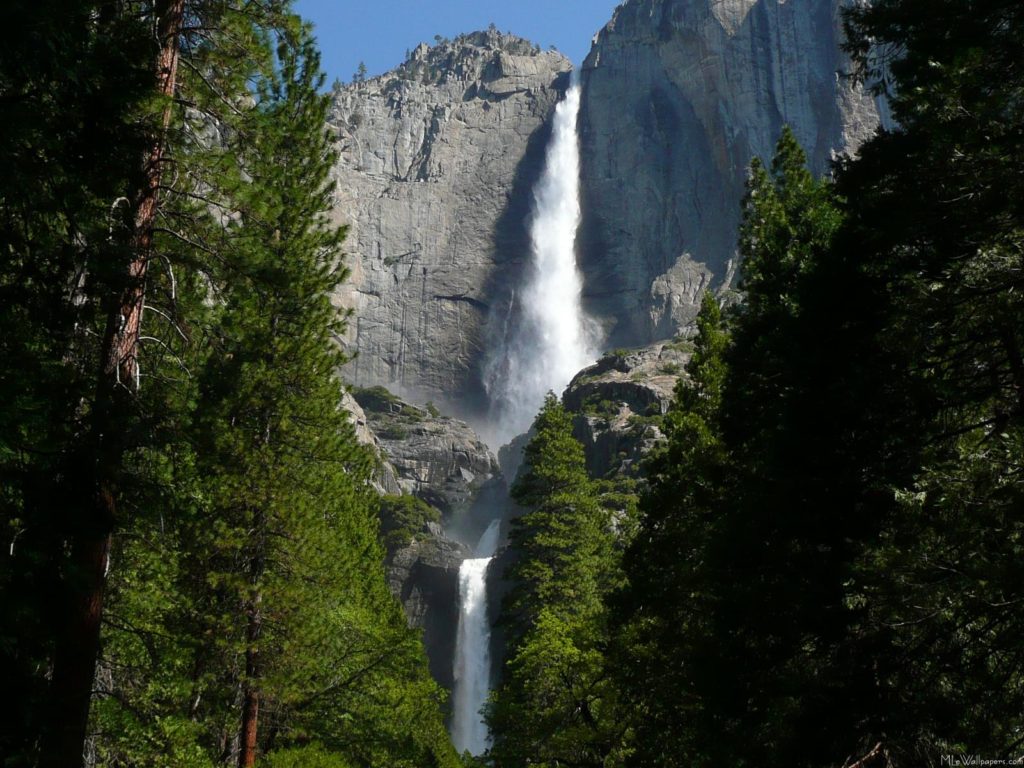
Source: private collection
Location:Yosemite Falls is located in the Yosemite Valley. You can view it from various viewpoints around the park, but the best way to experience it is to take a 1-mile hike to the bottom of the Lower Yosemite Falls. You will be close enough to feel the mist, so be prepared to get wet, especially if you are visiting during spring and peak flow.
Height: 2,425 feet
Best Time to view:
- Peak flow in March.
- Steady flow March – June.
- Dry August – October.
Reason to visit:
- North America’s tallest waterfall.
- 5th tallest waterfall in the World.
- 3 waterfalls in one, dropping approx. 135,000 gallons of water.
- Site to nature phenomenons:
- Spectacular rainbow, that can be seen at the Lower Falls.
- In May and June, light refract off the white rocks and creates a “moonbow“.
- Snow cone appears at the bottom of this waterfall in the winter months. This is a caused by the falling water freezing before it hits the ground. As a result, it piles into a large cone, that at times, reaches hundreds of feet tall.
- Live webcam
#2: SENTINEL FALLS
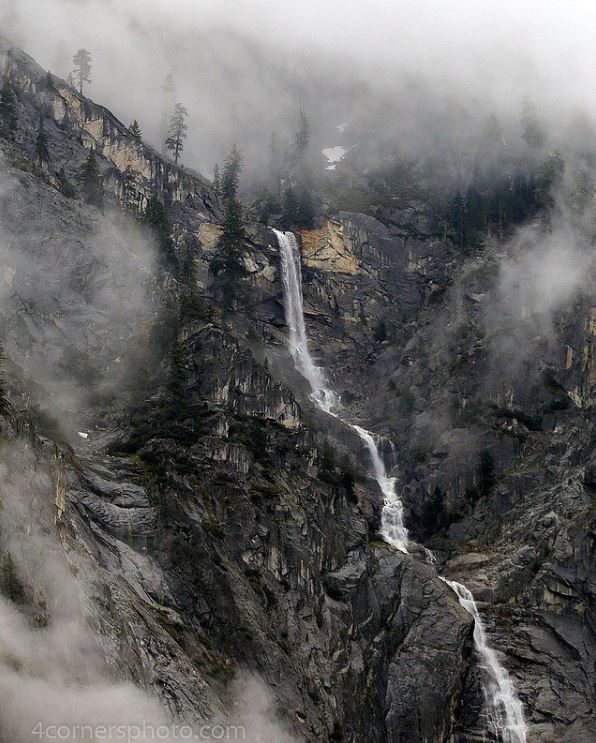
Source: 4cornersphoto.com | Original: https://www.instagram.com/p/Bfd9Cp7HFZU/
Sentinel Falls is considered a “second-tier seasonal” waterfall. Even though it is not as spectacular as some of the others around, it composed of an interesting series of long cascades, dropping over multiple steps to the valley below. While those may be attractive to waterfalls enthusiasts, a typical traveler might not find it as impressive.
Location: this waterfall flows in the south side of Yosemite Valley, by the Sentinel Rock. You can park by the Sentinel Beach picnic area or near by the Four Mile Trailhead for the best views.
Height: 2,000 feet
Best Time to view:
- Peak flow in May.
- Steady flow March – June (depening on weather, might be frozen until later in Spring).
- Dry August – October (in years with low snowpack, often dried by July).
Reason to visit:
- Second tallest watrefall in Yosemite Valley.
- The tallest waterfall on the South side of the Valley.
- Easy to spot from the road.
- 9 eye-catching cascading stairs down the rock wall.
#3: HORSETAIL FALLS
Horsetail Falls flows on the eastern edge of El Capitan in Yosemite Valley. This small waterfall becomes very popular in February, due to a unique lighting effect that happens only at sunset and it’s called Yosemite Firefall. When the sun sets, it creates a deep orange glow that reflects on the water, making it look as if the waterfall is on fire.
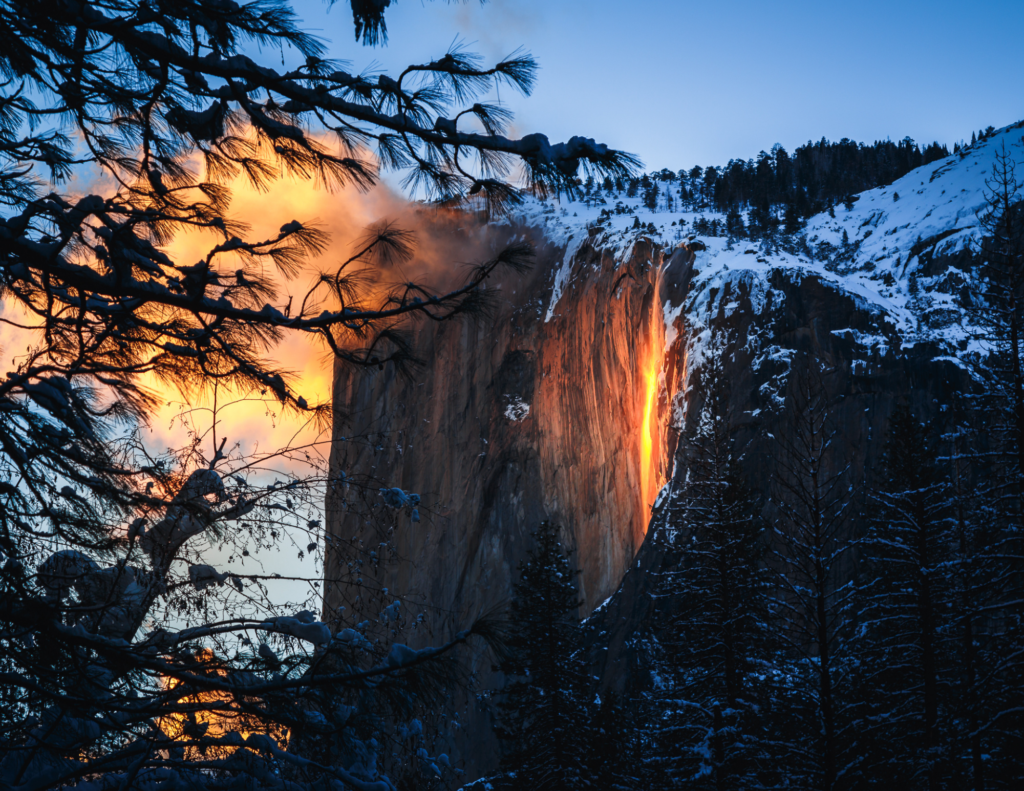
Location: near El Capitan picnic area. You can see the waterfall from the road.
Height: 1,000 feet
Best Time to view:
- December – April.
- Yosemite Firefall with its peak in mid-February.
Reason to visit:
- Site to one of the most rare nature phenomenon – Yosemite Firefall.
- Visible from the road.
- Flows in Winter months.
#4: BRIDALVEIL FALLS
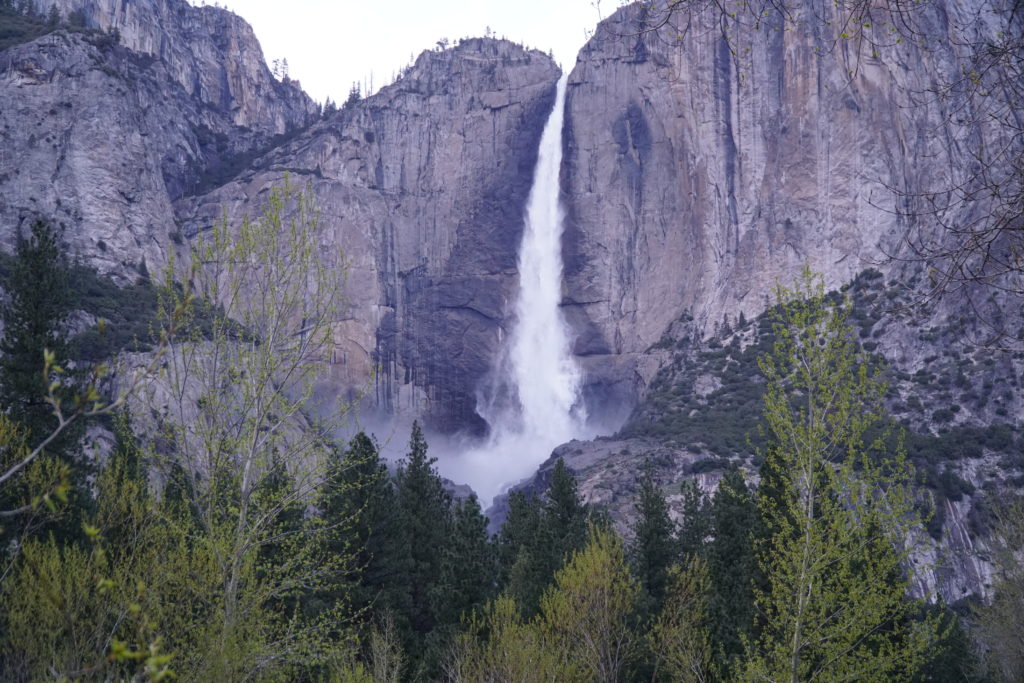
Bridalveil falls is probably the most visited waterfall in the Park. It is very accessible, and it is also one of a very few waterfalls in Yosemite that does not dry up in the Summer. It got its name from the way the flow resembles a bride’s veil blowing in the breeze.
Location: located on the way to Yosemite Valley. It can be seen from the tunnel view and Wawona Road. You can park by the waterfall and hike up the short trail to the base of the waterfall. In the peak flow months (Spring), the area at the base is wet and slippery. In winter months, it can freeze and become icy.
**As of Fall 2019, until Fall 2021, the trail to the Bridalveil will be closed for rehabilitation project **
Height: 1,000 feet
Best Time to view:
- Flows year-round.
- Peak flow in May.
Reason to visit:
- Flows year-round.
- Visible from the Tunnel View.
- Very accessible, easy hike with spectacular views
- Must see – the most visited waterfall.
#5: VERNAL FALLS
Even though Vernal Falls is pretty short compared to other waterfalls in Yosemite, it is actually one of the most impressive in terms of flow. It is known for the green foliage around it and cascading water.
Vernal Falls is a downstream from the Nevada Falls.
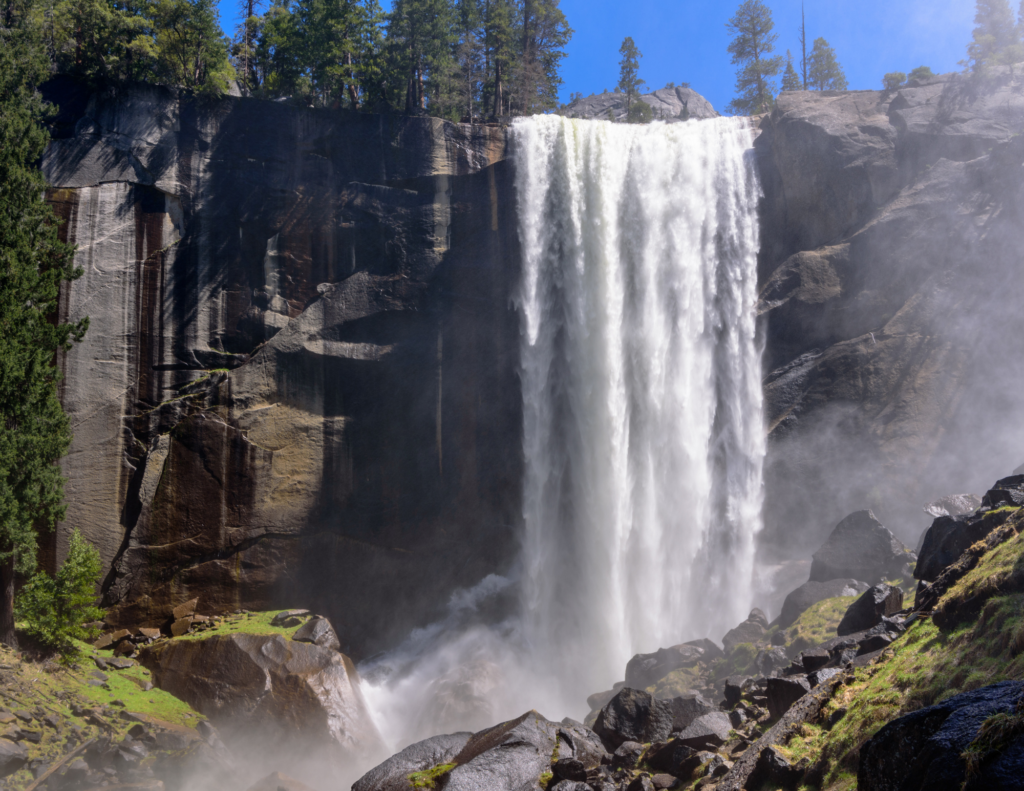
Location:
Unlike the waterfalls mentioned above, this one cannot be seen from the Valley or a car window. To see it, you must get out and onto one of the trails or travel to Glacier Point (open from May – October).
The easiest way to see it, is to take the popular Mist Trail, a path by the Happy Isles Nature Center (you can walk there from Curry Village or take a shuttle, when available). The walk is very popular, short (1.2 miles), moderate in difficulty, and takes you to the footbridge. You can stop there or you can continue to the top of the waterfall, but the incline progresses with the hike and it gets very steep as well as slippery from the spray.
Height: 317 feet
Best Time to view:
- Peak flow in April into early May.
- Runs year-round with the slowest flow in August.
Reason to visit:
- Flows year-round
- Located along beautiful and popular hike, Mist Trail.
- Virtual Tour
- Warning: this waterfall is fast and strong. The hike, although picturesque can be slippery and strenuous at times.
Other Sources:

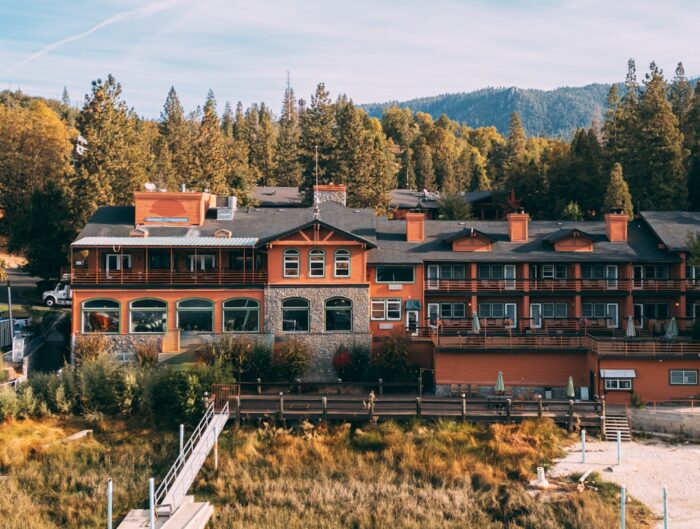
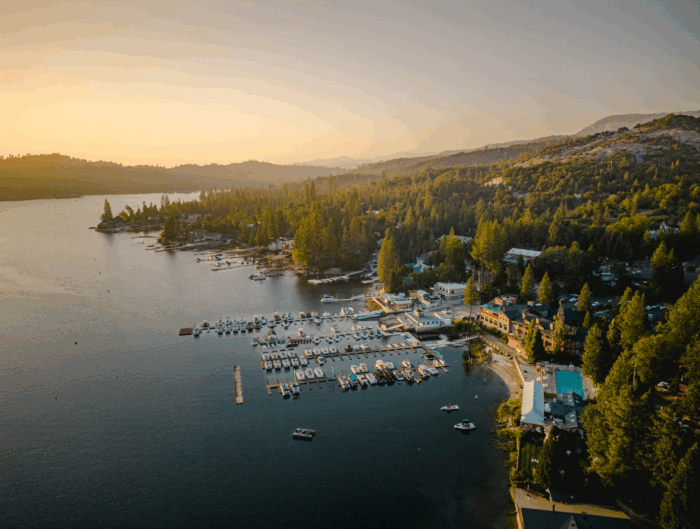
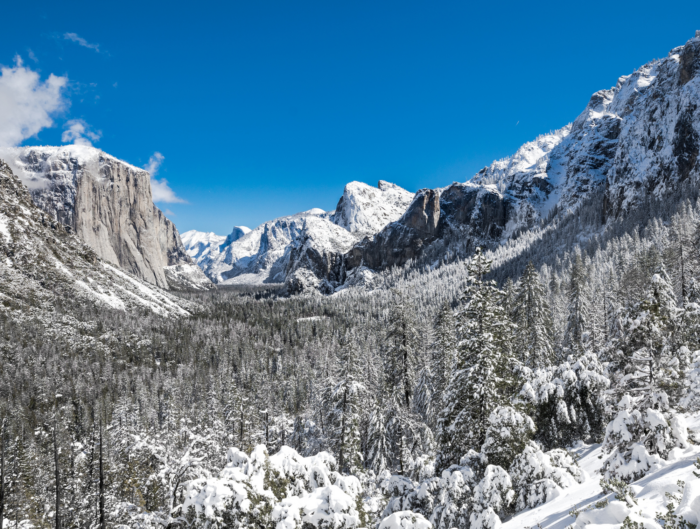
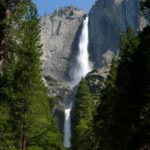
Leave A Reply